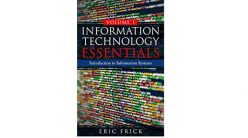
Integrating technology into teaching is the best way to prepare the children for a tech-packed tomorrow. Life, as we know it, is going at the speed of light on the information highway. If we stick to the age-old practice of rote learning, it will hurt the entire teaching-learning community for being obsolete. There are technology education books that point in the right direction. It helps educators to focus on-point and help improve the perception of the learners. Even though doing your research might give you a head start, there are chances that you get lost midway. These books ensure you are well equipped with the right set of tools to instil knowledge by developing curiosity in the minds of the learners.
Read More About : Interesting Technology Books For Kindergarten
Ready, Steady, Go
The first step is always the hardest. This applies to the teacher trying out new methods in the classes. “The Classroom Teacher’s Technology Survival Guide 1st Edition, by Doug Johnson” does provide a lot of in-depth examples to get started. How to move the proven classroom strategies into a technical environment is clearly outlined in this reference. No wonder it stands out as the gold standard among technology education books. This book is coined not just by research but more by practical know-how of what happens in a real scenario. What shows on paper might not be what is dealt with in reality. Hence the examples and inputs from the book are relevant all the more. There are pointers on how technology could be disruptive for the classroom environment. It, therefore, gives teachers an idea of how to draw the borders correctly.
If you are on the look for activities to try in the classroom, “Language Learning with Technology: Ideas for Integrating Technology in the Classroom, by Graham Stanley,” is your answer. There are a multitude of activities sorted out for the different levels of learners. It has an emphasis on the tech of today by putting the best use of social media and mobile technology in education. The curriculum is restructured around learning languages as a priority over technology used.

No Student Left Behind
The biggest hindrance in regular classroom learning is the inability to tailor-make lessons to match every students’ ability. Differentiated learning could be achieved by assigning tasks according to the learner. “Integrating Technology in the Classroom: Tools to Meet the Need of Every Student by Boni Hamilton, International Society for Technology In Education” is one of the technology education books that need a special mention. There are a plethora of ideas on how to encourage student-centred learning collaboratively. The learning curve presented in this source is very gradual and is set to boost your confidence all the way.
To stay up-to-date with technology that changes every passing second is a task of its own. Social networking and how to turn it around to best use for a teacher is something that is discussed in detail in “Using Technology with Classroom Instruction That Works, by Howard Pitler, Elizabeth R. Hubbell, and Matt Kuhn”. This is a must-read for teachers trying to figure out if technology is a distraction or a boon. The book by Pitler, Hubbell and Kuhn also lays out the tech that supports particular learning objectives and activities that support it.
Learn From Home
Whilst most technology education books deal with technology integration into classrooms, “Integrating Technology into the Curriculum 2nd Edition (Effective Teaching in Today’s Classroom)” takes a step further by turning entire classrooms online. There are sections covering critical areas such as virtual classrooms encouraging distance education. There are plenty of lesson plans that support interactive learning and thereby improve student involvement in learning.






